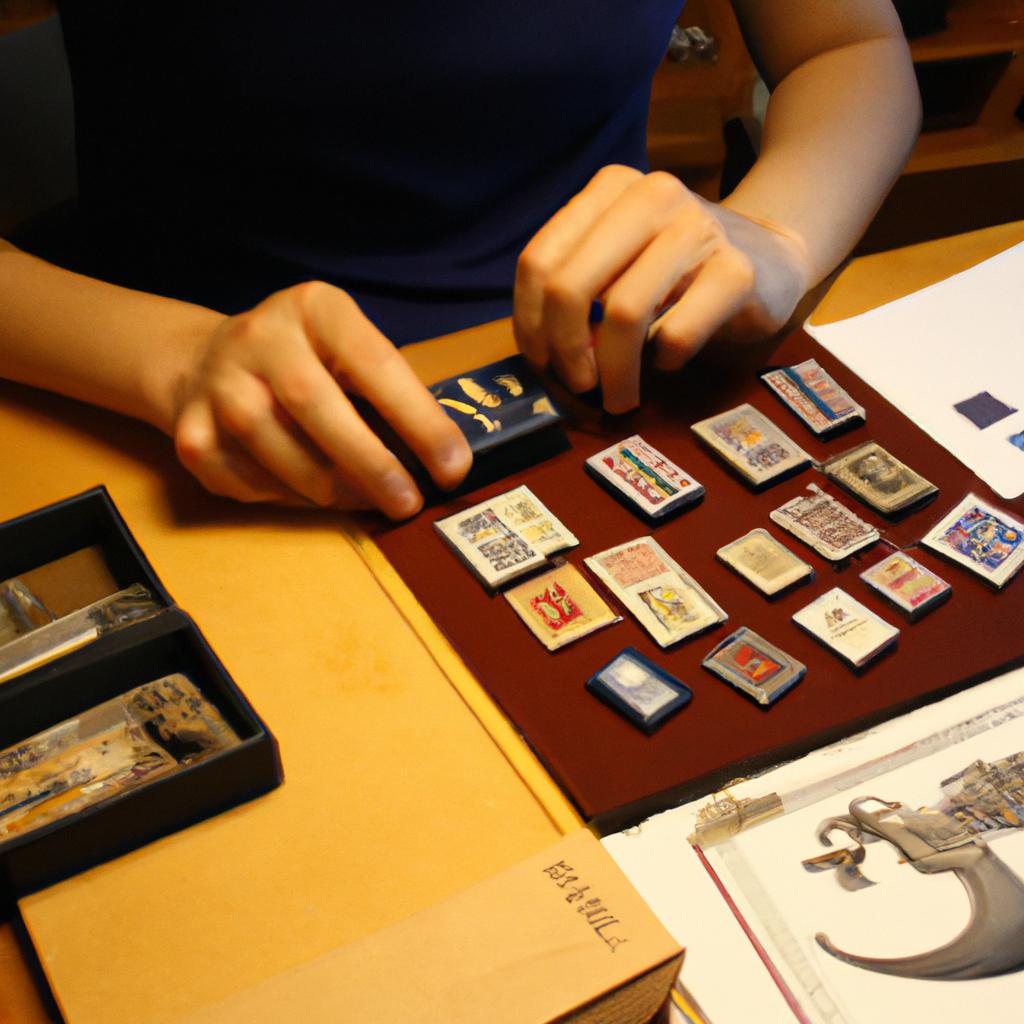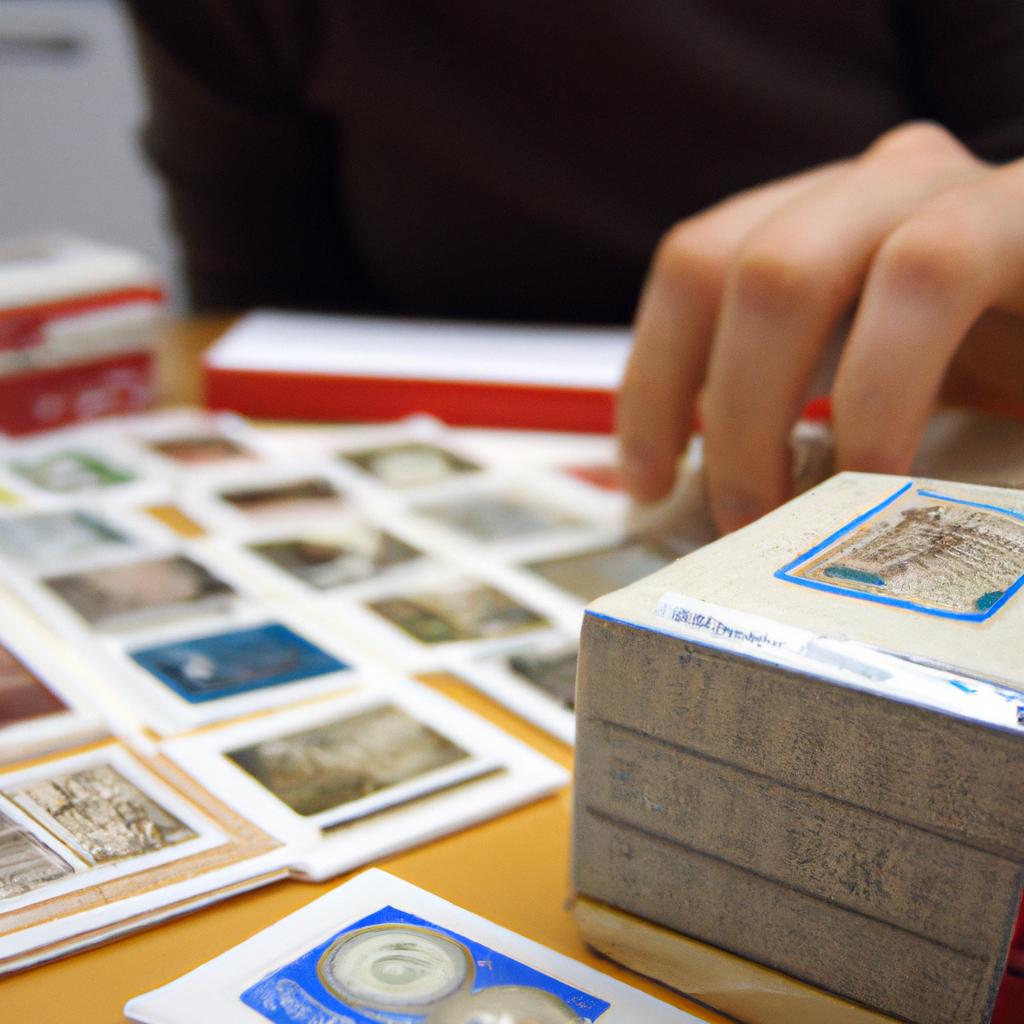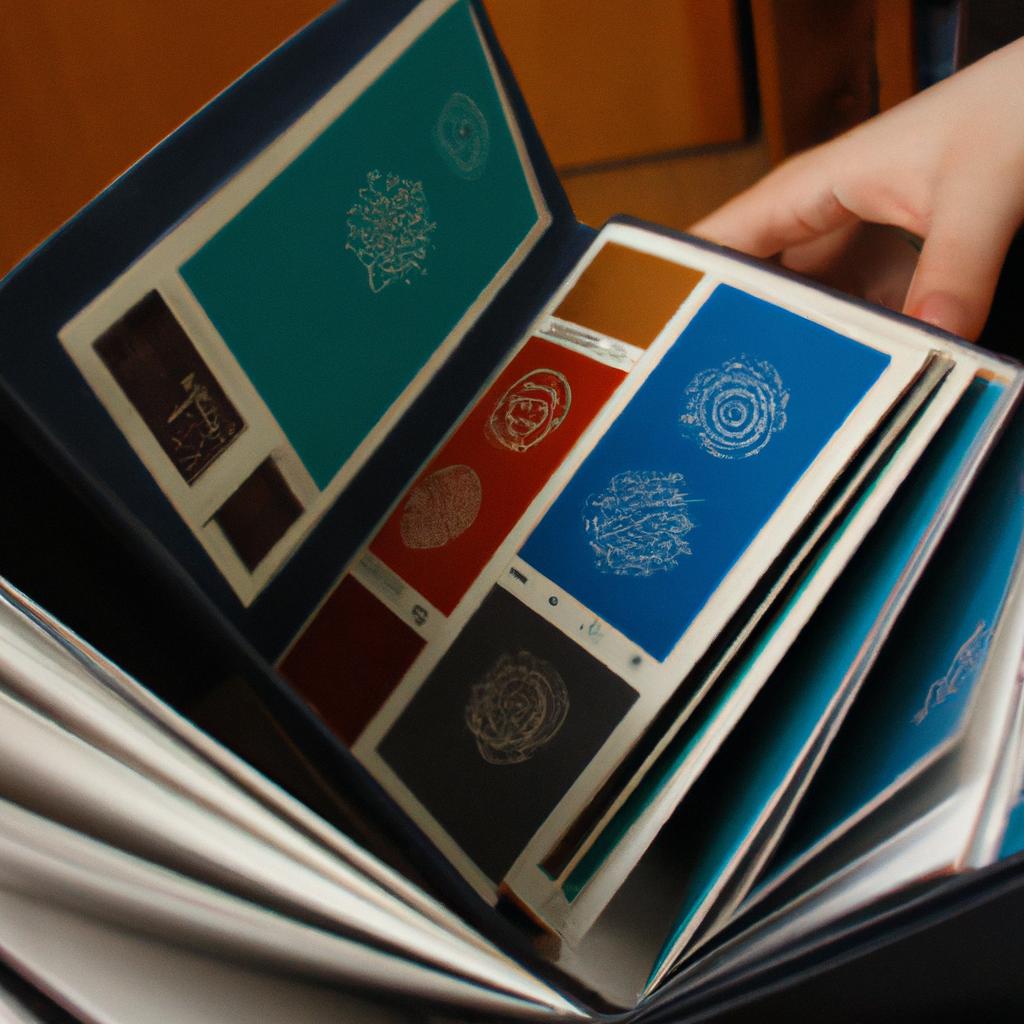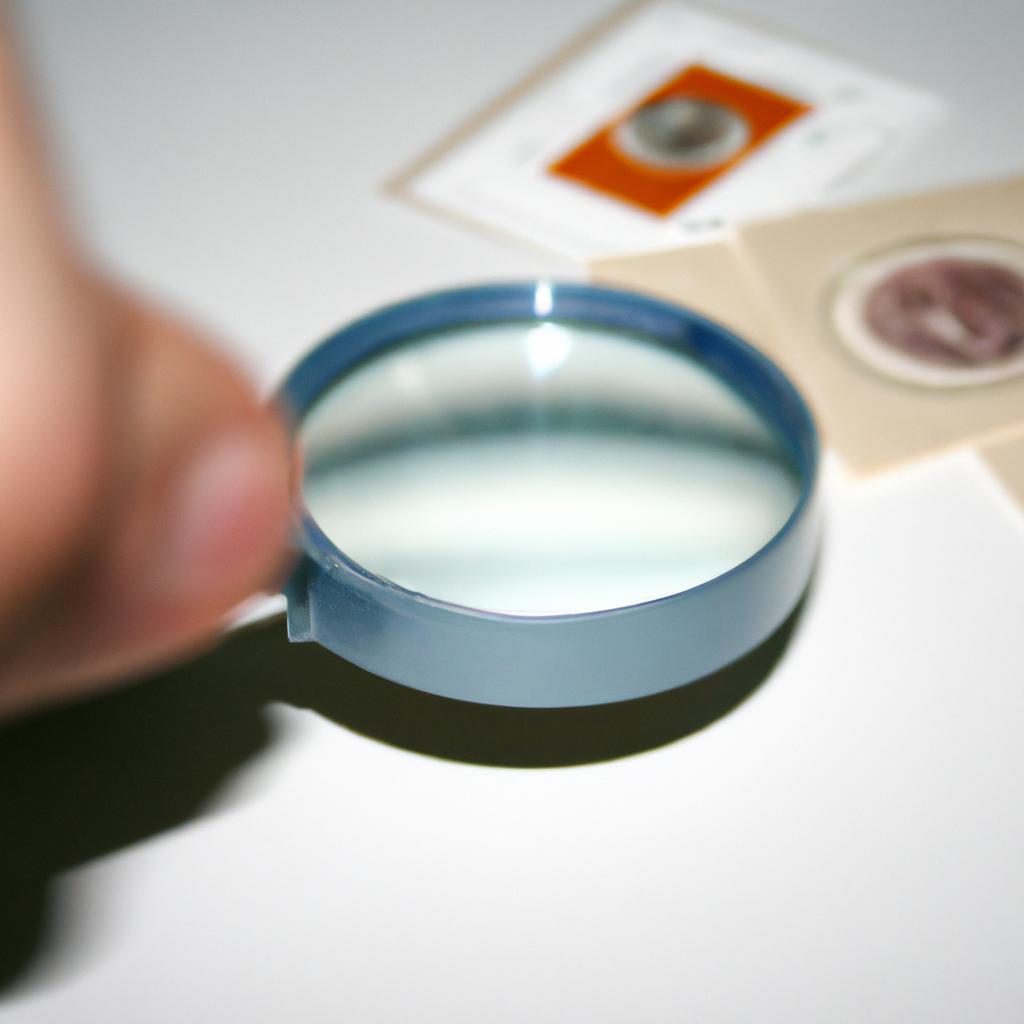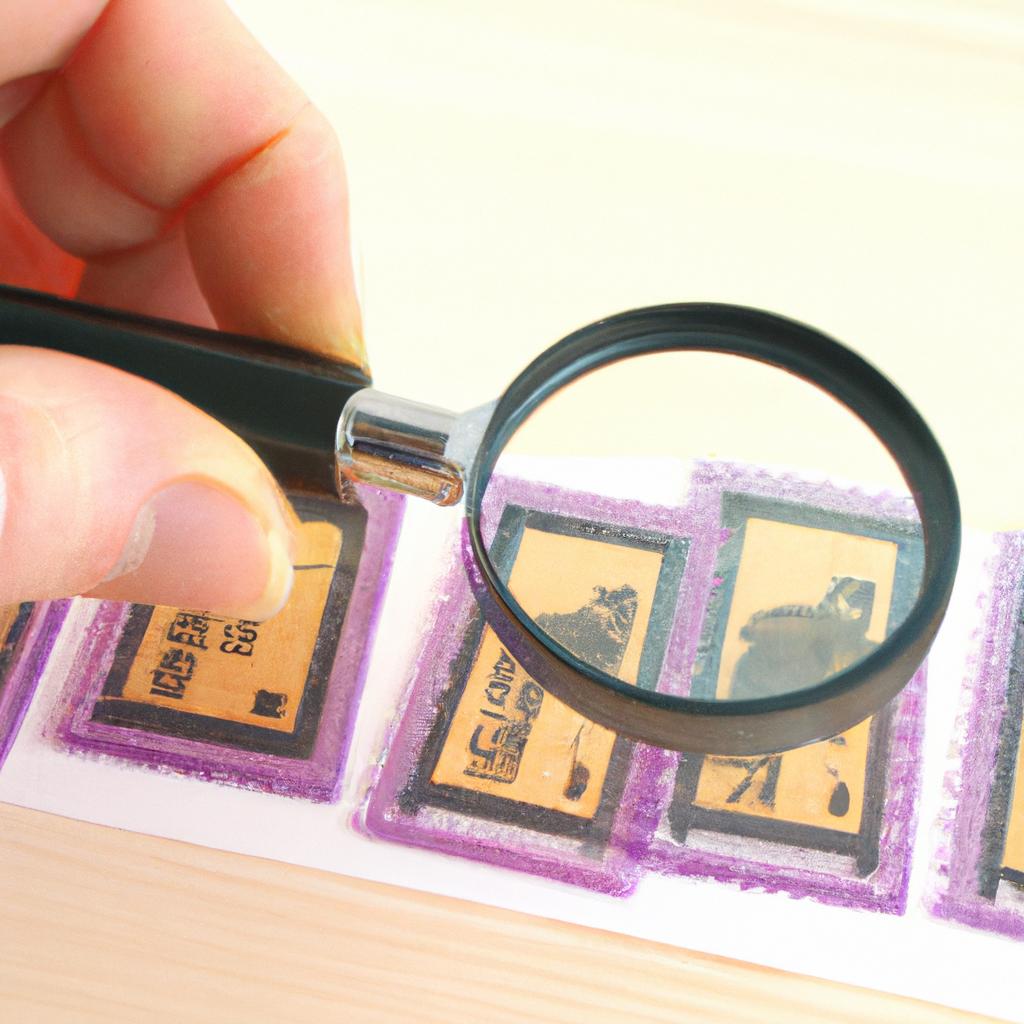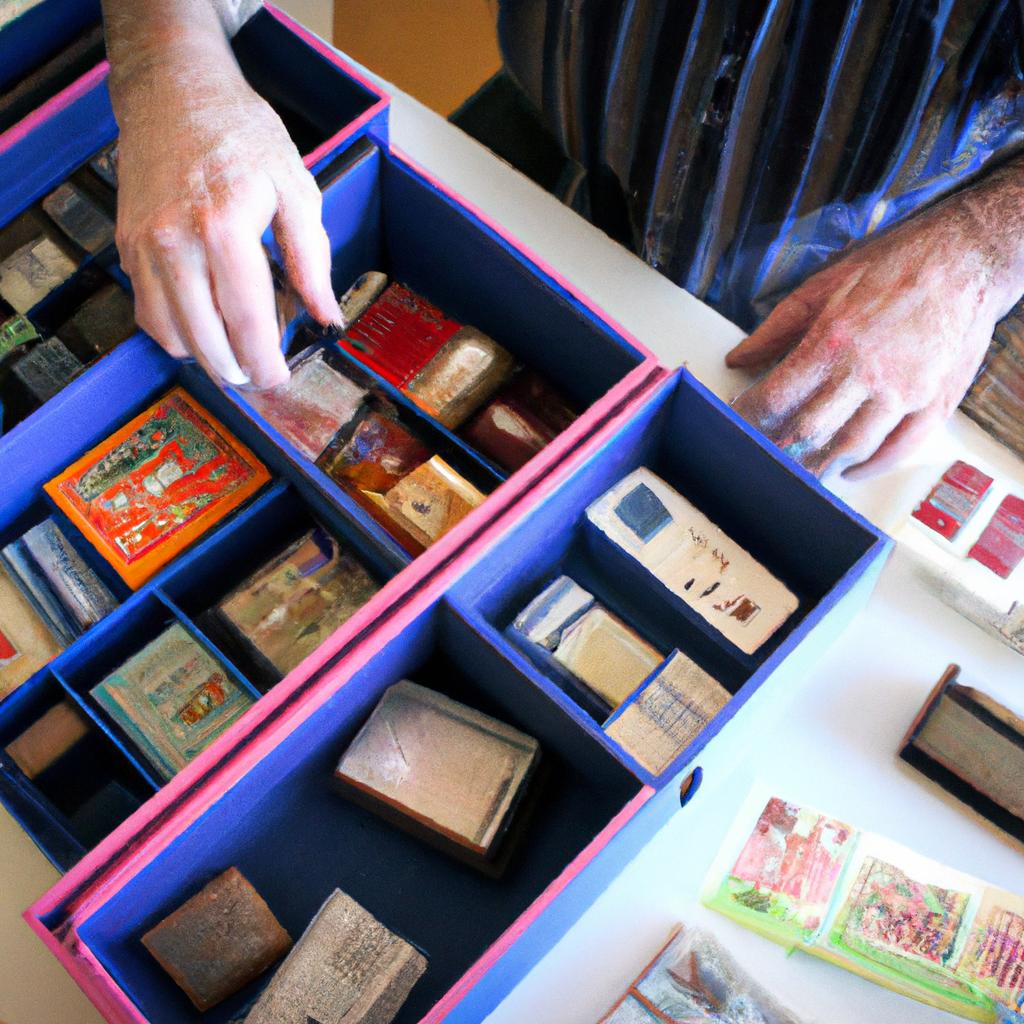Different Types of Stamps: Antiques and Collectibles: Stamp Collecting
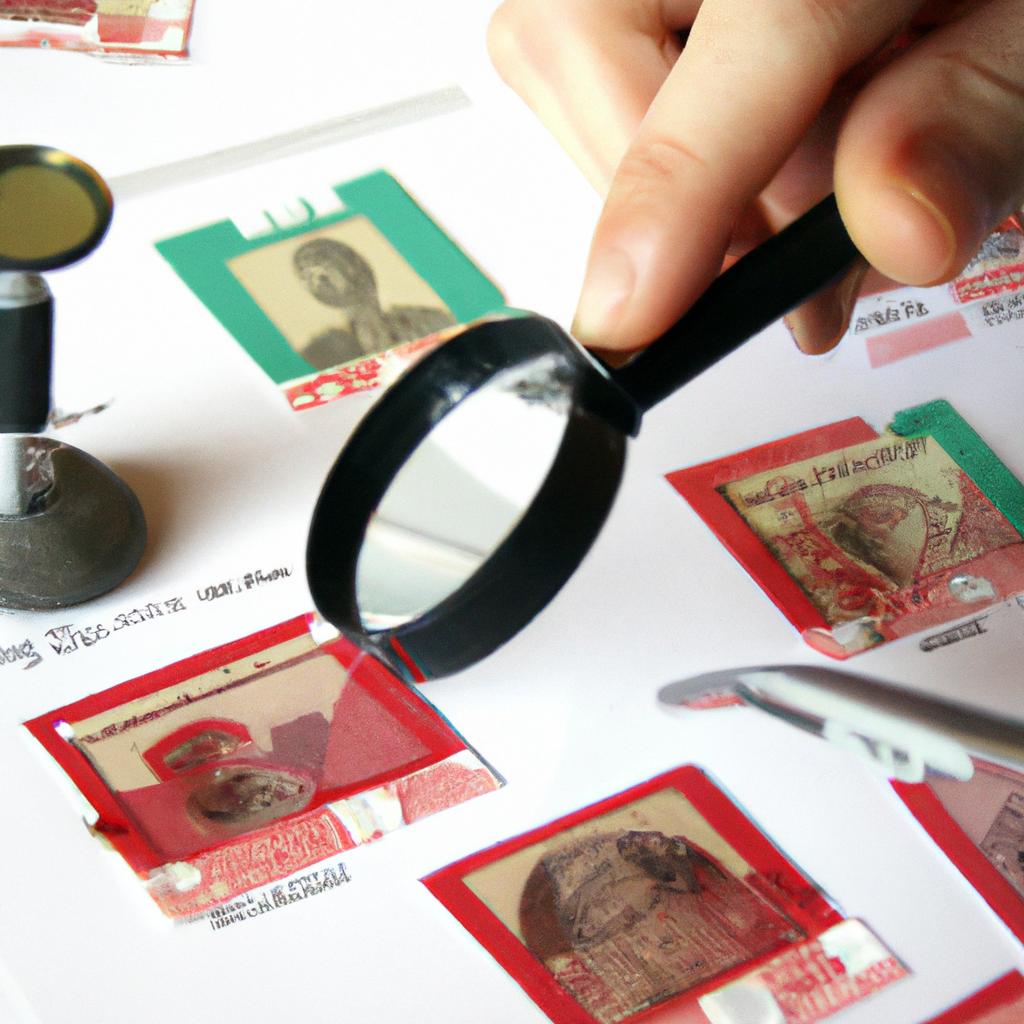
Stamp collecting is a popular hobby that has gained considerable attention among enthusiasts worldwide. The fascination with stamps lies in their historical significance, intricate designs, and the stories they tell about different cultures and countries. This article aims to explore the world of stamp collecting, specifically focusing on antiques and collectibles. By examining various types of stamps, such as rare and valuable ones, this article seeks to provide an insight into the diverse aspects of stamp collection.
To illustrate the allure of stamp collecting, let us consider a hypothetical case study. Imagine a passionate collector named John who stumbles upon a dusty box tucked away in his grandparents’ attic. As he opens it, he uncovers an array of old envelopes adorned with colorful postage stamps from all over the world. Intrigued by these small pieces of paper, John embarks on a journey into the realm of philately – the study and collection of stamps. His curiosity leads him to discover that each stamp not only represents postal history but also offers glimpses into cultural traditions, significant events, and artistic expressions.
Antique stamps serve as windows to the past; they evoke nostalgia for eras long gone while captivating collectors with their uniqueness and beauty. From classic issues like Penny Blacks to more recent releases with innovative printing techniques , antique stamps come in a wide range of styles and designs that appeal to various collectors. The Penny Black, for example, holds a special place in philatelic history as the world’s first adhesive postage stamp. Released in 1840, this iconic stamp features a profile of Queen Victoria and has become highly sought after by collectors worldwide.
Apart from their historical significance, antique stamps also have an inherent value due to their rarity. Stamp collecting is often driven by the pursuit of rare and valuable stamps that can fetch high prices in the market. Some stamps gain value over time due to limited production runs or printing errors, making them highly coveted among collectors. For instance, the inverted Jenny stamp issued in the United States in 1918 is famous for its upside-down airplane design and has consistently been one of the most valuable stamps in philately.
Collecting antique stamps goes beyond mere acquisition; it involves research, organization, and preservation. Dedicated collectors like John immerse themselves in the study of stamp catalogues and specialized literature to identify and categorize their collections accurately. They carefully store their stamps using archival-quality materials to prevent damage from light, moisture, or handling.
Stamp collecting not only offers personal enjoyment but also fosters connections within a community of fellow enthusiasts. Collectors often participate in stamp shows, auctions, or online forums where they can share knowledge, exchange stamps, and engage in friendly competition. These interactions contribute to the growth and evolution of stamp collecting as a vibrant hobby.
In conclusion, stamp collecting provides an exciting opportunity for individuals to delve into history while appreciating artistry and craftsmanship. Antique stamps hold immense value both as collectibles and windows into cultural heritage. Whether you are a beginner looking to start your collection or an experienced collector seeking rare finds, exploring the diverse world of stamp collecting promises endless fascination and discovery.
Defining Stamps: Understanding the Basics
Imagine stumbling upon an old dusty box in your grandmother’s attic. As you open it, you discover a collection of tiny colorful pieces of paper adorned with intricate designs and images. These are stamps, fascinating little artifacts that have captured the attention of collectors and enthusiasts for centuries.
Stamps can be defined as small adhesive labels or imprints used to denote payment of postage on mail items. They often feature unique designs representing various themes such as historical events, famous personalities, flora and fauna, or cultural symbols. Stamp collecting, also known as philately, has become a popular hobby worldwide due to its combination of artistic expression and historical significance.
To better understand the world of stamp collecting, let us delve into some basic aspects:
-
Origins: The first postage stamp was introduced by Great Britain in 1840—the Penny Black—which featured Queen Victoria’s profile. This innovation revolutionized postal systems globally, enabling standardized rates based on weight and distance.
-
Types: There are different types of stamps available today, each serving a specific purpose:
- Definitive Stamps: These common stamps come in regular use over an extended period.
- Commemorative Stamps: Issued for special occasions like anniversaries or significant events.
- Special-Issue Stamps: Designed for niche markets or limited editions catering to specific interests.
- Postage Due Stamps: Used when insufficient postage is paid initially; recipients must pay the balance before delivery.
-
Design Elements: The visual appeal plays a crucial role in stamp collecting. Design elements include colors, illustrations, watermarks (subtle patterns visible under light), perforations (tiny holes along the edges), and embossing techniques—all contributing to their distinctiveness.
-
Value Assessment: Determining the value of stamps involves considering factors like rarity, condition (unused vs. used), age, demand, and historical significance. The rarity of a stamp can greatly influence its market value, with some rare stamps fetching astronomical prices in auctions or private sales.
Understanding the basics of stamps provides a foundation for exploring their vast world.
Historical Stamps: Exploring the Past
Building on our understanding of stamps, let’s delve into the captivating world of stamp collecting. As we explore this fascinating hobby, we will discover the wide array of stamps available for collectors and gain insight into their significance.
Stamp collecting offers enthusiasts an opportunity to immerse themselves in a myriad of themes, designs, and historical contexts. For instance, imagine coming across a rare 1847 British Guiana One-Cent Magenta stamp – one of only four known to exist. This particular stamp holds immense value due to its rarity and has become a coveted piece among collectors worldwide. Such unique finds highlight the thrill that accompanies exploring the diverse realm of stamp collecting.
To better understand the different types of stamps available to collectors, consider the following points:
- Commemorative Stamps: These stamps are typically issued to commemorate significant events or honor notable individuals. They often feature vibrant colors and intricate designs that capture iconic moments in history.
- Definitive Stamps: Designed for everyday postal use, definitive stamps depict national symbols or important figures. They provide a glimpse into a country’s culture and heritage while serving practical purposes.
- Special-Issue Stamps: These stamps cater to specific interests such as nature, sports, art, or pop culture. With appealing illustrations or photographs related to niche subjects, they attract both casual collectors and avid enthusiasts alike.
- Thematic Collections: Some collectors focus on building collections around specific themes like animals, space exploration, or famous personalities. These thematic collections allow for creativity and personalization within the hobby.
In addition to these categories, there is also an abundant variety within each type of stamp. The diversity spans across countries, time periods, printing techniques, perforations, watermarks – all contributing factors that make every stamp unique. To further illustrate this richness in choice amongst stamps suitable for collecting purposes here is an example table showcasing a selection of notable stamp issues:
| Country | Theme | Year | Notable Stamp |
|---|---|---|---|
| United States | Space Exploration | 1969 | Apollo 11 Moon Landing |
| Canada | Wildlife | 1987 | Canada Geese in Flight |
| Australia | Indigenous Art | 1996 | Aboriginal Flag |
| Japan | Anime Characters | 2010 | Doraemon, beloved cartoon cat robot |
Stamp collecting is far from a mundane pastime. The allure lies not only in the tangible beauty and historical significance of stamps but also in the stories they tell and the connections they foster among collectors worldwide. As we continue our exploration, let us now turn our attention to another captivating aspect of this hobby: rare stamps.
Transition into subsequent section:
Delving deeper into the world of philately unveils a realm where scarcity meets value – Rare Stamps: Uncovering Valuable Finds. In this next section, we will unravel tales of extraordinary discoveries that have captured the imagination of collectors throughout history.
Rare Stamps: Uncovering Valuable Finds
In the world of stamp collecting, one can often stumble upon rare and valuable stamps that have a rich historical significance. These unique treasures not only hold monetary value but also serve as windows into the past. For instance, take the case of the Penny Black stamp, which holds the distinction of being the world’s first adhesive postage stamp. This tiny piece of paper revolutionized postal systems worldwide when it was introduced in Great Britain in 1840.
Unearthing Hidden Gems
Rare stamps are highly sought after by collectors due to their scarcity and historical importance. The thrill of finding one lies in discovering a hidden gem among countless ordinary stamps. Here are some key factors that contribute to a stamp’s rarity:
- Printing errors: Mistakes made during the printing process can result in misprints or inverted designs, making these stamps exceptionally rare.
- Limited editions: Some stamps are released in limited quantities, often commemorating special events or anniversaries, leading to high demand from collectors.
- Postmarked variations: Certain postmarks were used only for a brief period or on specific occasions, resulting in fewer surviving examples with those markings.
- Surviving numbers: Over time, many stamps have been lost or destroyed, further reducing their availability today.
To illustrate the rarity and value associated with certain stamps, consider this table showcasing four notable examples:
| Stamp Name | Year Issued | Rarity Level | Estimated Value |
|---|---|---|---|
| Inverted Jenny | 1918 | Extremely rare | $1 million+ |
| Treskilling Yellow | 1855 | Unique specimen | $2.3 million |
| British Guiana 1c Magenta | 1856 | Only one known example | $9.5 million |
| Hawaiian Missionaries | 1851-1852 | Fewer than 20 known to exist | $760,000+ |
Unveiling the Past
Rare stamps provide a tangible connection to bygone eras and historical events. Each stamp tells a story, whether it be through its design, origin, or purpose. By examining these artifacts of communication, collectors can gain insights into social, political, and cultural aspects of different time periods.
The study and collection of rare stamps not only preserve an important part of our heritage but also allow us to appreciate the intricate artistry and craftsmanship that went into their creation. As we delve further into the world of stamp collecting, let us now turn our attention to thematic stamps – those that revolve around specific subjects or themes.
[Transition Sentence: Now let’s explore another fascinating aspect of stamp collecting – Thematic Stamps: Collecting by Subject.]
Thematic Stamps: Collecting by Subject
While stamp collecting can be a fascinating hobby, it is the pursuit of rare stamps that truly excites collectors. These elusive treasures not only hold historical significance but also possess considerable monetary value. One such example is the Penny Black, issued in 1840 as the world’s first adhesive postage stamp. With its distinctive black design and intricate details, this stamp has become highly sought after by collectors worldwide.
Unearthing these valuable finds requires extensive knowledge and research. Here are some key factors that contribute to the rarity of stamps:
-
Scarcity: The scarcity of a particular stamp greatly influences its worth in the collector’s market. Stamps from smaller countries or those with limited print runs tend to be rarer and thus more valuable.
-
Design Errors: Mistakes made during printing can result in unique variations of stamps, making them highly prized among collectors. Examples include inverted centers or missing colors, which significantly increase their desirability.
-
Historical Significance: Stamps commemorating significant events or featuring prominent figures often command higher prices due to their cultural and historical importance. For instance, a stamp depicting an iconic leader or marking a crucial moment in history can attract both philatelists and history enthusiasts alike.
-
Condition: The condition of a stamp is critical in determining its value. Mint-condition stamps without any damage or flaws are typically more desirable than heavily used ones.
To illustrate further, consider the following table showcasing four rare stamps along with their estimated values:
| Stamp | Year of Issue | Rarity Level | Estimated Value |
|---|---|---|---|
| British Guiana 1c | 1856 | Extremely Rare | $9 million |
| Inverted Jenny | 1918 | Scarce | $1 million |
| Treskilling Yellow | 1855 | Unique | $2.3 million |
| Hawaiian Missionary | 1851 | Rare | $600,000 |
These examples demonstrate the immense allure of rare stamps and the significant sums collectors are willing to pay to own them. The thrill of discovering such valuable pieces is what makes stamp collecting an exciting endeavor.
As philatelists delve deeper into their collection, they often explore another captivating aspect of stamp collecting – commemorative stamps. These special issues celebrate noteworthy events or honor exceptional individuals, combining artistic design with historical significance. This section will delve into this fascinating realm of stamp collecting, highlighting the diverse range of subjects that these commemorative stamps depict.
Commemorative Stamps: Celebrating Special Events
Continuing our exploration of stamp collecting, let us now delve into the world of thematic stamps. Thematic stamps are a fascinating aspect of philately that captures collectors’ interest due to their focus on specific subjects or themes. These stamps offer an opportunity to showcase various topics ranging from nature and wildlife to sports and famous personalities.
To better understand this concept, consider the hypothetical case of Sarah, an avid stamp collector who is passionate about marine life. Sarah’s collection primarily consists of thematic stamps featuring different species of fish, coral reefs, and maritime scenes. By focusing on a particular theme, Sarah can curate her collection around her personal interests while appreciating the beauty and diversity represented in these stamps.
When it comes to thematic stamp collecting, there are several popular categories that enthusiasts often explore:
- Nature and Wildlife: This category encompasses flora and fauna from all corners of the globe. It allows collectors like Sarah to discover beautiful depictions of animals, plants, mountainscapes, and landscapes.
- History and Culture: Stamps depicting historical events, cultural traditions, monuments, or iconic figures provide valuable insights into significant moments in human history.
- Sports and Olympics: For sports enthusiasts who also happen to be stamp collectors, this category offers a chance to merge two passions. Stamps commemorating sporting events such as the Olympic Games highlight athletic achievements worldwide.
- Arts and Entertainment: From renowned artists to movie stars and musicians, this category showcases stamps dedicated to icons from the world of arts and entertainment.
In exploring these diverse themes within thematic stamp collecting, collectors gain not only knowledge but also emotional connections with their collections. The visual representation coupled with the stories behind each stamp creates a sense of fascination for both seasoned philatelists as well as newcomers.
As we move forward in our journey through the captivating realm of stamp collecting, our next section will focus on another essential aspect – commemorative stamps. These stamps play a significant role in celebrating special events and occasions, adding further depth to the world of philately.
Postal Stamps: The Backbone of Stamp Collecting
Building upon the exploration of commemorative stamps, we now delve into another fascinating aspect of stamp collecting – postal stamps. These stamps form the backbone of any philatelist’s collection, offering a diverse range of designs that reflect the cultural significance and historical relevance of countries worldwide.
Postal Stamps: The Backbone of Stamp Collecting
To illustrate the importance and appeal of postal stamps, let us consider an example. Imagine a collector who acquires a set of vintage British colonial era postage stamps from India dating back to the early 20th century. Each stamp tells a story, depicting scenes from daily life, prominent landmarks, or notable figures during that time period. Through these pieces, collectors can gain insights into different cultures, traditions, and historical events.
The emotional connection between collectors and postal stamps is further heightened by several factors:
- Rarity: Rare postage stamps with limited print runs hold immense value for collectors. They become prized possessions due to their scarcity, making them valuable additions to any collection.
- Aesthetics: Postal stamps often showcase intricate artwork or captivating photography that captures the essence of a particular culture or event. Their visual appeal adds an extra layer of appreciation for both seasoned enthusiasts and casual observers alike.
- Educational Value: Philately goes beyond mere collecting; it serves as a tool for learning about history, geography, artistry, and various other subjects. Postal stamps provide glimpses into significant moments in time while fostering curiosity and knowledge expansion.
- Social Connections: Engaging in stamp collecting enables individuals to connect with fellow enthusiasts around the world through clubs, exhibitions, online forums, or trading activities. This sense of community fosters shared experiences and mutual support within the hobby.
Table Example:
| Advantages | Emotional Response | Examples |
|---|---|---|
| Rarity | Excitement | Limited edition stamps |
| Aesthetics | Appreciation | Beautiful designs |
| Educational Value | Curiosity | Historical significance |
| Social Connections | Camaraderie | Stamp collector clubs |
In summary, postal stamps play a vital role in the world of stamp collecting. Their historical and cultural significance, combined with their aesthetic appeal, captivate collectors while providing educational value. Moreover, stamp collecting fosters connections among enthusiasts worldwide, creating a sense of community within this captivating hobby.

